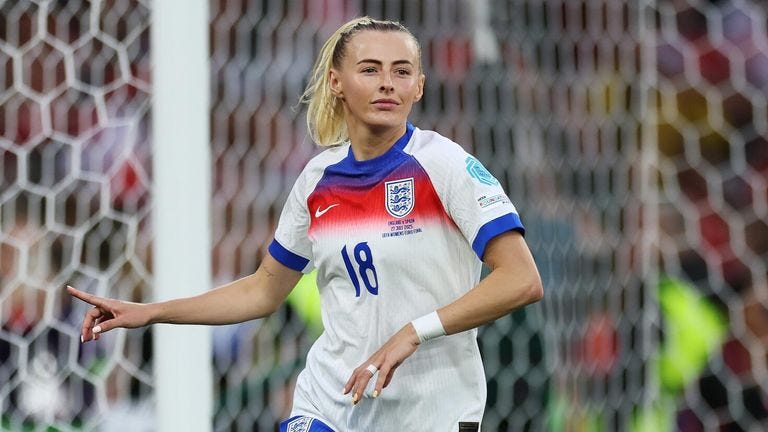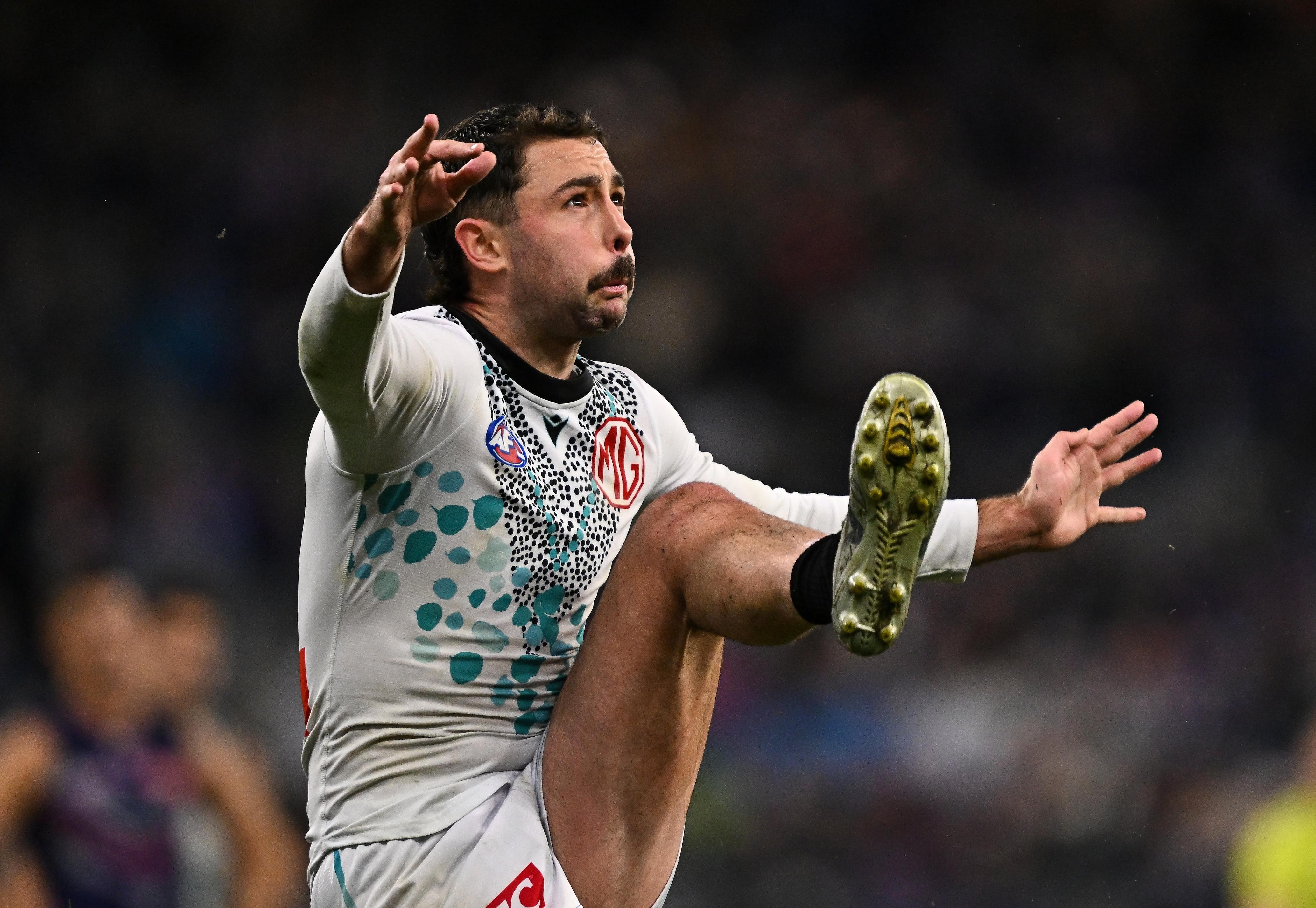Women's EURO 2025 Finances

Living in Switzerland, I can appreciate more than most what a huge success the UEFA Women’s EURO 2025 tournament has been, generating an unprecedented level of interest in women’s football, not only because of the progress of the Swiss “Nati”.Your correspondent attended six games, including all five hosted at the Letzigrund in Zürich, as well as the final in Basel, greatly enjoying the experience, along with the other fans in the sell-out crowds. By the way, a hat tip to UEFA, whose organisation has been excellent, especially the ticket app, which “just worked”.Obviously, massive congratulations are due to England, who retained their title after beating Spain on penalties in the final.It’s fair to say that the Lionesses did this the hard way, losing their first group game to France, twice winning nerve shredding penalty shootouts and only beating Italy one minute from the end of extra time in the semi-final.Although they might not have played their best football, they certainly lived up to the description they awarded themselves of “proper England”, as their refusal to be beaten was their main strength.Also worth noting that this is the first time England have ever won a senior football tournament on foreign soil.Of course, our focus here is on the financials, so let’s take a look at how this tournament compares to previous editions, trying to better understand how women’s football has grown.For some more perspective, we shall also compare this tournament with the FIFA Women’s World Cup 2023 and the UEFA Men’s EURO 2024.RevenueBased on the budget, the Women’s EURO 2025 will generate €128m revenue, which is more than twice as much as the previous edition in England in 2022. Even more impressively, this is ten times as much as the €12.7m in 2017 in the Netherlands. Just 20 years ago, the 2005 tournament delivered less than €4m of income.The majority of the revenue comes from media rights, which are worth €72m (56%), followed by commercial rights €41m (32%), then tickets and hospitality €15m (12%).Media RightsMedia rights have almost doubled since the previous Women’s EURO, surging from €37.5m to €72.0m. These were less than €4m just 12 years ago in Sweden.The event has basically moved from being broadcast to a small, niche market to an important part of the mainstream, being televised in nearly 200 countries with live views projected at 500 million, which would represent a significant increase over the 374 million registered in 2022.As an example of the growing interest, a whopping 10.2 million watched England defeat Italy in the semi-final, ITV’s highest rating of the year. In addition, the quarter-final victory over Sweden after a dramatic penalty shoot-out attracted a peak audience of 7.4 million on BBC, while the peak audience share was an impressive 65%.Commercial RightsAlthough media rights remain the largest revenue stream, it is actually commercial rights that have seen the fastest growth, almost tripling from €15.3m in 2022 to €41.0m. Before the last two editions, this was worth peanuts.UEFA said that the Swiss event had “attracted the largest sponsorship programme ever for a UEFA tournament, with more than 20 brands joining the Women’s EURO 2025 partner family”.In fact, there are 21 sponsor partners – including 11 UEFA women’s football sponsors, five global tournament sponsors and five national sponsors – featuring major brands such as Amazon, AXA, Booking.com, Lidl, PepsiCo, Unilever, Visa and Volkswagen.These brands will have appreciated that women’s football can reach a different audience to men’s football, as well as a large crossover of male fans.Tickets and HospitalityThis year’s event also set a new record for tickets and hospitality, which rose €4.6m (40%) from €10.4m in 2022 to €15.0m. This was more than five times as much as the €2.8m generated in the Netherlands in 2017.The growth was partly thanks to UEFA’s decision to apply a sensible pricing policy, with tickets starting at CHF 25, thus attracting good crowds everywhere.Paradoxically, this might have caused a few issues in wealthy Switzerland, as some felt that the wealthy Swiss might not be too bothered about missing games, even if they had purchased tickets, as they could easily afford the loss. However, the reality is the fans have turned up in their thousands.AttendancesThere were also concerns about the relatively small size of the stadia in Switzerland (Basel’s St. Jakob-park has the largest capacity at just 34,250), but the people have voted with their feet, quite literally, if we consider the well attended fan marches.In fact, the total attendance of 657,291 comfortably surpassed the previous record of 574,875 in England in 2022. Furthermore, this was around three times as many people as the 217,088 in the 2013 Sweden tournament.This is some achievement, given that no match came close to a couple of ties in England 2002 that had enormous crowds, e.g. the final at Wembley between England and Germany attracted 87,192, while 68,871 attended the opening game between the hosts and Austria at Old Trafford.Of course, some of the earlier versions of the Women’s EURO featured fewer teams and therefore fewer matches, but the growth is equally evident in terms of average attendance, which was up to 21,203 in Switzerland, overtaking the 18,544 in England.The tournament’s success was already clear at the group stage, which attracted a record 461,582 fans, averaging 19,233, which was 25% (92,000) more than the 369,314 in England.The crowds were even better in the knockout rounds, rising to 28,134 in the quarter-finals, 24,486 in the semi-finals and 34,203 in the final.Moreover, the stadium utilisation was excellent, averaging 97% in total. Apart from a couple of group games in Geneva, every match had at least 95% occupancy, which was a great result. An incredible 29 out of the 31 matches were sold out.Of course, the size of the crowd was dependent on the stadium capacity (among other things), which ranged from the 34,250 in Basel to just 7,750 in Sion.The best stadium in terms of average attendance was St. Jakob-Park in Basel with 34,138, followed by Stadion Wankdorf in Bern 29,639, Stade de Genève 23,847 and Stadion Letzigrund in Zurich 22,505.The highest stadium utilisation, i.e. attendance divided by capacity, was a very impressive 99.7% in Basel, followed by 99.5% in Bern and 98.8% at the Allmend Stadion in Luzern.Switzerland was a challenging choice as a location, as it is undoubtedly an expensive country, but at the same time it is easily accessible from a geographical perspective, so over a third of tickets were purchased by international fans, with thousands coming over the border from Germany, England, France and the Netherlands in particular.Nadine Kessler, UEFA’s director of football, said, “We’ve never had so many travelling fans at a women’s Euros, there have been 233,000 from 160 countries. The figure in England three years ago was less than half that.”Competition CostsIn line with the higher revenue, UEFA said that “on the flip side” there will be higher costs, as “the services provided to teams have reached the same level as for a men’s EURO”. Not before time, many would say.In particular, that means higher workforce, stadium and security costs, while UEFA have also funded free public transport for fans with match tickets (as was the case at the men’s EURO 2024 in Germany).They have also raised the quality of TV coverage and inventories for commercial partners.As a result, competition costs are budgeted to almost double from €57m to €113m, a substantial increase on the €11m in the Netherlands in 2017.Prize MoneyThe prize money paid to teams more than doubled from €16m to €41m, which is five times greater than the €8m pot for the 2017 tournament.Nadine Kessler said, “We’re improving enormously because we know how important prize money is, what it does in terms of public awareness, but also in terms of promoting development.”Each of the 16 teams received a €1.8m qualifying fee, adding up to €28.8m, which accounted for 70% of the overall allocated prize money.The remaining 30% is made up of performance bonuses: €100k for a win and €50k for a draw in the group stage, €550k for reaching the quarter-finals, €700k for the semi-finals, €850k for the runners-up and €1.75m for the winners.As a result, England received €5.0m, while the other finalists, Spain, got €4.2m. The two semi-finalists, Germany and Italy, received €3.25m and €3.2m respectively. The maximum possible was €5.1m.To place this into perspective, England only received €2.1m for winning EURO 2022. In fact, all eight quarter-finalists this summer got more prize money than the previous tournament’s champions.Most importantly for the developing nations, the participation fee has tripled from €600k to €1.8m.Indeed, the participation fee was the biggest difference between 2022 and 2025, closely followed by the prize money for the winners, which increased from €660k to €1.75m.In addition, for the first time, participating national associations had to allocate a fixed percentage of the distribution to their players, which was set as between 30% and 40% of the total, rising to 35-40% for teams that reach the knockout stages.The remainder pf the prize money must solely be used to cover team expenses and future investments aiding the development of women’s football.Solidarity PaymentsSolidarity payments, which are made to compensate European clubs whose players are selected for national teams participating at the Women's EURO 2025, have doubled from €4.3m in 2022 to €9m in 2025.Nadine Kessler said, “We want everyone who contributes to the success of the Euros to be rewarded. It’s a tournament that belongs to everyone.”UEFA had originally budgeted €6m this time round, but this was increased to €9m, following a proposal from the European Club Association (ECA) to increase the financial distributions to clubs for the release of their players for national team competitions.The total amount paid is calculated according to the number of days that a player was released for the final tournament, which includes ten preparation days, the total number of days a player participated in the tournament plus one additional travel day.For each player, a club is compensated at a rate of €985 per day. The minimum payment per player that a club will receive is €19,700, for a player whose national team is eliminated after the group stage, while the maximum amount will be €36,445, for a player from a team that was in Group A and reached the final.There is some concern that such payments will only increase the competitive imbalance in domestic leagues, e.g. the only WSL clubs with representatives in England’s squad are the “Big Four”, namely Chelsea, Arsenal, Manchester United and Manchester City.On the other hand, it is surely right that clubs are encouraged to work with their national association by being rewarded for “sharing” their players.Net ResultThe projected net result is a €35m loss, which is a significant increase on the €14m deficit in 2022.UEFA described this as “a clear commitment to further support women’s football”, while Kessler argued, “We’re investing more, even if we’re not making any money with the Euros, because it’s simply the right thing to do.”In fact, the tournament should generate net revenue of €14.8m, more than twice as much as the €6.2m in 2022, considering gross revenue of €128m less €113.2m competition costs.In other words, the overall loss only arises in order to finance the significantly increased prize money and solidarity payments.This was confirmed by Kessler, “The financial outcome of this European Championship will ultimately be more positive than expected. But it's not a loss; it's an investment. This tournament would have already been profitable if we hadn't increased the prize money by 156%. We deliberately did this so that clubs and associations could benefit from the tournament.”She added, “For numbers, revenues and operation costs, this Euros has improved massively on 2022.”Government SupportDuring the bidding process, the Swiss federal government had promised CHF 15m of support, but then reduced their funding to just CHF 4m.This led to massive push back by numerous stakeholders, especially the eight host cities, who asked the federal government to reconsider its decision. After numerous discussions, it was finally decided that the original CHF 15m should be distributed.Comparison with FIFA Women’s World Cup 2023Women’s football also had another success story when Australia and New Zealand jointly hosted the FIFA Women’s World Cup in 2023, which culminated in Spain beating England in the final to raise the trophy for the first time.Unfortunately, FIFA did not break out revenue for this event, though they did make a number of positive references in their annual report, e.g. they said that it was the main driver for “exceptional” coverage of events on 2023.They also mentioned the dedicated sponsorship programme for women’s football, with all packages available for the FIFA Women’s World Cup being sold. These included five global FIFA Partners, two global Women’s Football Partners, nine global FIFA Women’s World Cup Sponsors and 14 Tournament Sponsors. This added up to a total of 30 Partners and Sponsors, more than twice as many as there were for the FIFA Women’s World Cup 2019.In addition, ticketing sales and hospitality rights amounted to $43m, as a new record for the Women’s World Cup was established with nearly two million tickets sold. The average attendance was just under 40,000, while the final attracted a crowd of 75,784.FIFA attributed much of the tournament’s success to “significantly increased investment”, which was worth $499m. This was more than three times as much as the $157m allocated to the previous event in 2019 in France.The investment included a substantial increase in the financial contributions to players, participating member associations and the clubs of players taking part in the tournament, from $15m in 2015 and $50m in 2019 to a new high of $152m in 2023. This comprised $110m funding for teams, $31m preparation money and $11m Club Benefits Programme.In addition, FIFA brought the event conditions in line with those put in place for the FIFA World Cup Qatar 2022, including the number of delegates per team, the amount of international and national travel expenses for the tournament, accommodation standards and rooms, team quarters and facilities, as well as other services provided to the participating teams.This led to other expenses surging from $107m to $407m.Prize Money FIFA Women’s World Cup 2023The prize money at the Women’s World Cup 2023 was €94m ($110m), which is more than twice as much as the €41m at the Women’s EURO 2025, though this does make sense, as the World Cup features twice as many teams (32 vs. 16).In fact, there is very little difference in prize money on a per game basis, which worked out to €1.32m at the Euros, compared to €1.47m at the World Cup.Comparison with UEFA Men’s EURO 2024Although Nadine Kessler said, “We need to keep comparison to the men’s tournament in the past”, it is still worth a look to understand the magnitude of the differences, though, of course, both events ended up with Spain and England as the finalists.The Men’s EURO 2024 was held in Germany, featuring 24 teams for the first time. Ten venues were used, ranging from the 71,000 capacity Olympiastadion in Berlin to the 40,000 Red Bull Arena in Leipzig, i.e. every single stadium had more seats than the largest one used in the Women’s EURO in Switzerland.Revenue at the Men’s EURO was just shy of €2.5 bln, which was around 20 times as much as the €128m at the Women’s EURO, while the event contributed €1.3 bln to UEFA’s coffers, as opposed to the €35m needed to support the Women’s tournament.In other words, despite the impressive success of the Women’s EURO in Switzerland, the Men’s event still remains UEFA’s jewel in the crown – at least for national team events.The men’s event is certainly compensated accordingly, as the €331m prize money is eight times as much as the women’s €41m.For example, Spain received €28.25m for winning the Men’s EURO, compared to €5.1m for the same achievement in the Women’s EURO, while England got €24.3m vs. €4.1m as runners-up.ConclusionAll that being said, there is little doubt that women’s football is experiencing a surge of interest and recognition, as shown by the overwhelming success of the Women’s EURO this summer, which came hot on the heels of last year’s Women’s World Cup.UEFA President Aleksander Ceferin only attended two games, but he did say that “the Women's EURO 2025 has set a new benchmark for women's football”, adding, “this is just the beginning, as we continue to invest unprecedented amounts.”Nadine Kessler said it best, “If it was not clear before, it is undeniable now – women’s football is unstoppable and here to stay. Before a ball was even kicked, over 600,000 tickets were sold – a record-breaking milestone that speaks volumes about the growing passion for the women’s game. Nearly every match has been a sell-out, with electric atmospheres and fans turning out in unprecedented numbers.”The UEFA women’s football director added, “Millions more are following the action around the world through social media and live broadcasts. This is more than a tournament; it’s a movement, and the response from across Europe and beyond proves that women’s football is not only here to stay – it is setting the new standard.”This is important, as international tournaments like the Euros continue to be a crucial shop window for the women’s game, helping to boost interest in the domestic game.As WSL Football chief executive, Nikki Doucet, said, “If England win on Sunday there’s going to be another massive moment, but even if they don’t win everyone is still going to want to watch Michelle and Chloe. They’re still going to want to come and watch Hannah.”Apart from all that, anyone that attended any of the matches at this summer’s Euros or watched a game on TV will appreciate that the women’s game can deliver just as much skill, excitement and drama as the men’s game.Nerve wracking penalty shootouts? Tick. Last minute winners? Tick. Extraordinary saves? Tick.Spain winning the Euros? Oh, hang on, it seems that there are some differences with the men’s game after all. To coin a phrase, it’s staying home!








/https%3A%2F%2Fsportsmole-media-prod.s3.gra.io.cloud.ovh.net%2F24%2F48%2Fbenjamin-sesko.jpg)
